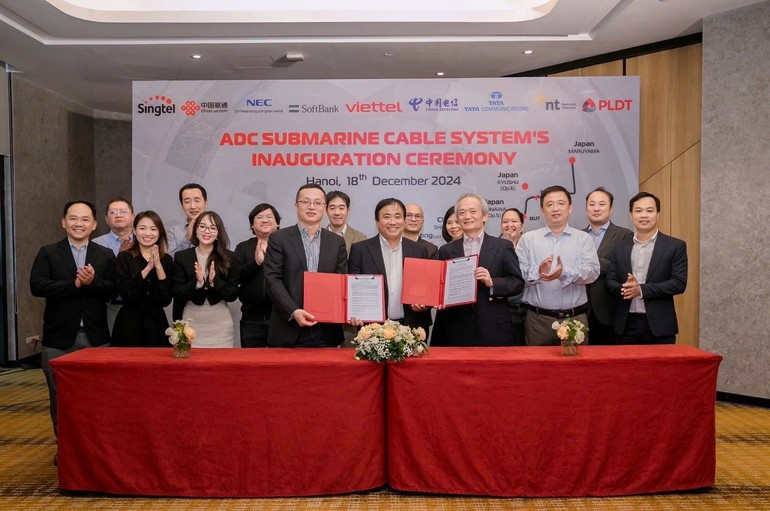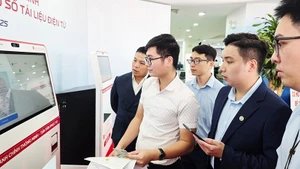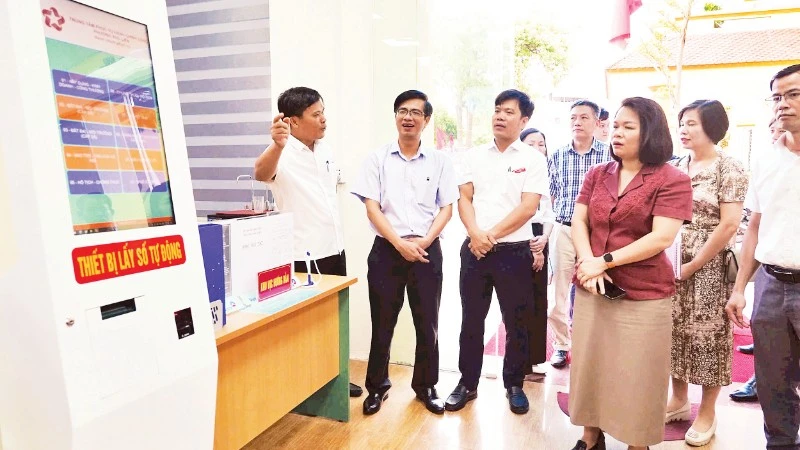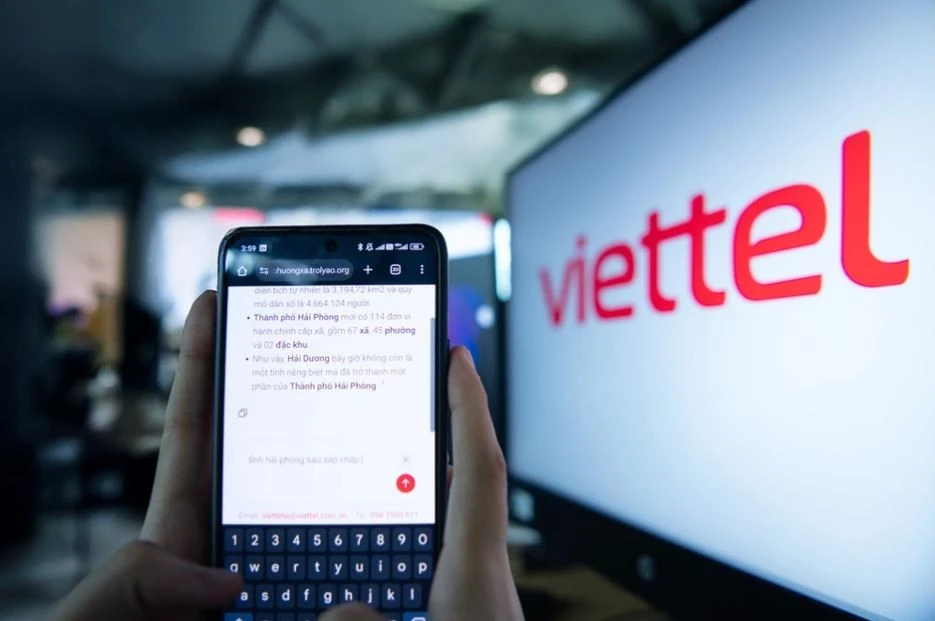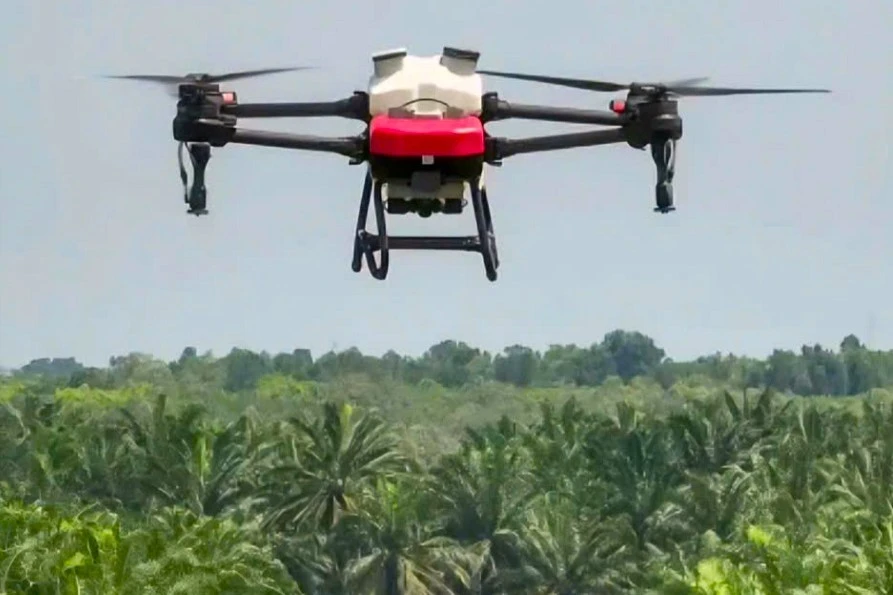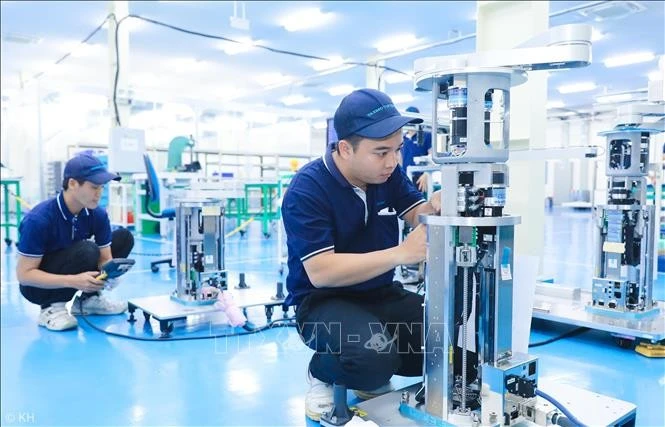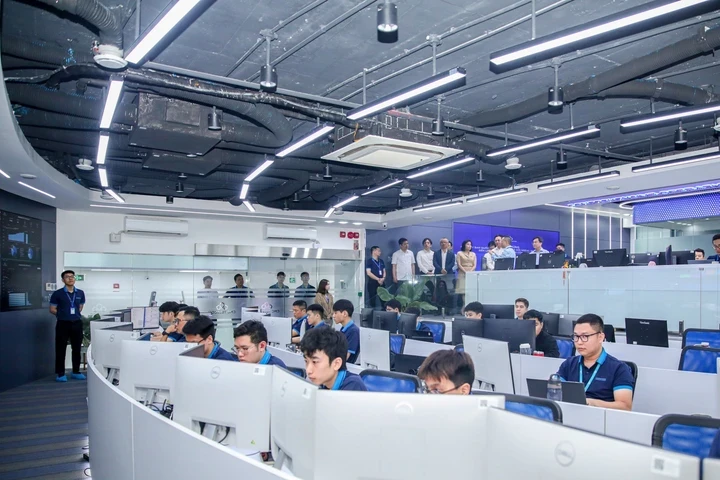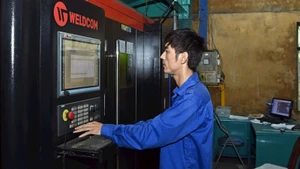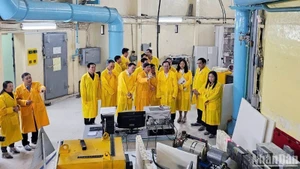Weak connectivity infrastructure would become a “bottleneck”, hindering the development and application of advanced digital technologies, thus affecting the competitiveness of the entire economy. Viettel Group, represented by its member Viettel Solutions, is the Vietnamese enterprise investing in the highest number of submarine fibre-optic cables, aiming to build a “solid foundation beneath the sea”.
Every day, billions of digital actions occur almost instantaneously: a video call, an international transaction, a cloud storage operation. Behind this seamless flow lies an enormous infrastructure system, and at its core are the submarine fibre-optic cables — the physical “backbone” of the global internet.
With over 600 cables currently operating across the ocean floor, spanning 1.3 million kilometres, these networks are responsible for carrying more than 98% of international data traffic, making them the lifelines of the digital economy.
The underground highways that shape the digital world
The hottest concepts in today’s digital economy, such as hyperscale data centres and cloud platforms, cannot function without connectivity infrastructure — the transmission network whose heart is the submarine fibre-optic cable system. Essentially, these are thin cables containing optical fibres, acting as “high-speed highways” that use light pulses to transmit data at enormous speeds across tens of thousands of kilometres under the sea.
Viet Nam is currently connected to the world through various channels, including submarine cables, terrestrial cables, and satellites. However, submarine cables are the primary form, accounting for over 90% of international bandwidth, spanning six major cable routes: SMW3, AAG, IA, APG, AAE-1, and ADC. This system plays a pivotal role in everything from personal communication, e-commerce, and international financial transactions to global supply chain management.
A disruption to these cables can have immediate impact on broad economic and social activities, underscoring the importance and necessity of ensuring stable and robust connectivity infrastructure.
The performance of breakthrough technologies like AI, big data, and cloud computing depends directly on two factors: bandwidth (the capacity to transmit large volumes of data) and latency (response time).
Bandwidth can be likened to the number of lanes on an underground highway. The greater the bandwidth, the more “data vehicles” can travel simultaneously. Meanwhile, latency is the time it takes for a “vehicle” to go from point A to point B — the lower the latency, the faster the data response.
Training a complex generative AI model requires processing and transferring datasets potentially reaching petabytes (1 petabyte = 1 million gigabytes) between global data centres. Without ultra-high-bandwidth cables, this process would become congested, slowing AI research and deployment.
Meanwhile, by its nature, cloud computing enables access to computing resources from anywhere. This is only possible thanks to high-speed, low-latency connectivity between end-users and the data centres of leading global providers.
A weak connectivity infrastructure would be a “bottleneck”, hindering the development and application of advanced digital technologies and ultimately impacting the competitiveness of the entire economy.
Viettel builds bridges connecting Viet Nam to the world
Viet Nam’s national digital transformation strategy to 2025, with a vision to 2030, has identified three main pillars: digital government, digital economy, and digital society, emphasising that “digital infrastructure must take the lead”. To realise this vision, the Information and Communications Infrastructure Plan for 2021–2030 has set forth highly specific targets for the submarine fibre-optic cable system.
By 2030, Viet Nam aims to deploy and put into operation at least 10 new submarine cable routes, increasing its total to at least 15 cables with a minimum capacity of 350 Tbps, positioning Viet Nam as one of the region’s data hubs.
By 2035, it is expected that Viet Nam’s international cable system will rank among the regional leaders in terms of quantity, capacity, and quality, aiming to ensure 90% of connectivity capacity to major digital hubs in Asia, with 10% reserved for hubs in the Americas and Europe.
Currently, Viettel is the Vietnamese enterprise investing in the highest number of submarine fibre-optic cables.
The AAG cable is the first trans-Pacific route directly connecting Southeast Asia with the US.
The IA (Intra Asia) cable connects countries within Asia and is currently the cable with the lowest latency connecting Viet Nam to Singapore. Viettel is the only Vietnamese carrier investing in and operating a landing station for this cable in Viet Nam.
The APG (Asia Pacific Gateway) cable provides up to 54 Tbps of bandwidth, connecting eight countries and territories in the Asia-Pacific region.
Meanwhile, the AAE-1 (Asia-Africa-Europe 1) is an international submarine cable connecting Asia, Africa, and Europe. Viettel currently owns one landing station on this route, which is also the only cable connecting directly to Europe.
ADC (Asia Direct Cable) is the newest and most advanced cable, inaugurated by Viettel Solutions in December 2024 and officially put into commercial operation in Viet Nam in April 2025. With a total investment of 290 million USD and cooperation from nine leading telecommunications groups, including Viettel, the ADC directly connects to all three of Asia’s major internet hubs: Singapore, Hong Kong (China), and Japan. With a maximum capacity of 50 Tbps, the ADC is the largest-capacity submarine cable ever operational in Viet Nam to date.
Such an infrastructure serves as the foundation for Vietnamese enterprises to confidently offer services to international markets, from software and IT service exports to e-commerce. Robust connectivity infrastructure is also a crucial factor in attracting foreign investors, particularly global technology giants (BigTech).
The ultra-high bandwidth and low latency of cables like ADC enable Viettel to deliver the highest quality digital services while meeting the growing demands for 4K/8K video, online gaming, AR/VR, and AI applications.
Viettel Solutions’ commitment goes beyond performance. New-generation cables like ADC are designed with advanced technologies, improving usage efficiency compared to previous generations.
